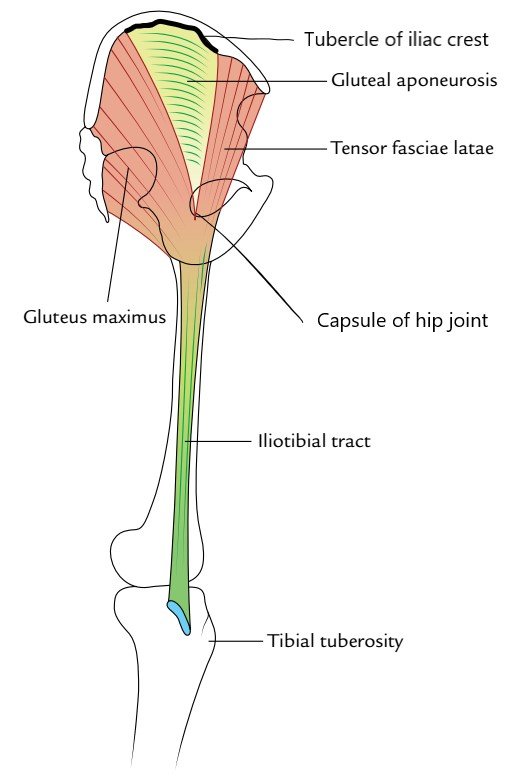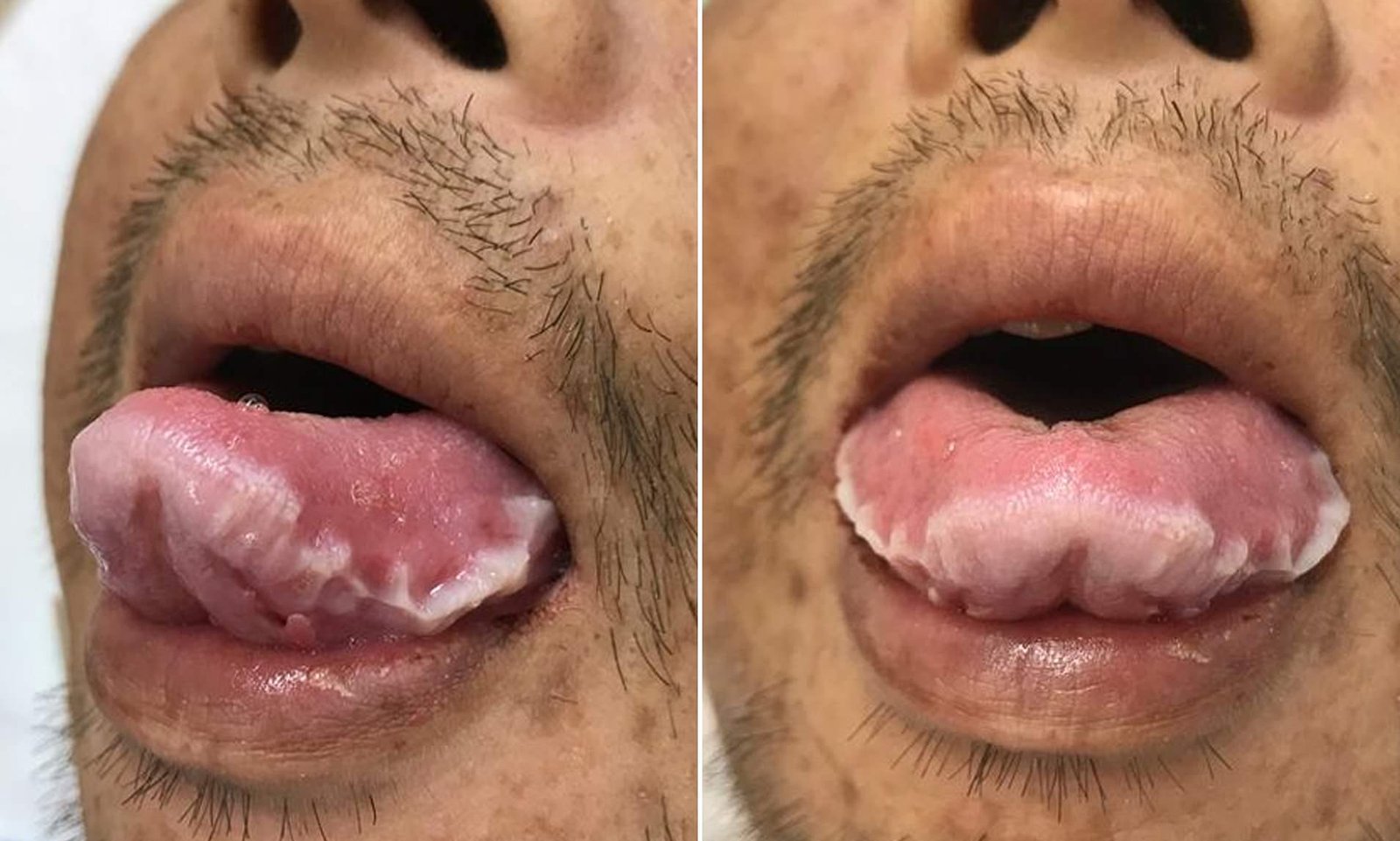Iliotibial tract is also known by many other names such as Iliotibial band (IT band) and Maissiat’s band. It is basically a 2 inches wide thickening of tensor fascia Lata formed proximally at the hip and present in the lateral portion of the thigh. We are going to study this because it gives insertion to some important muscles of the thigh and this structure also has a common clinical correlation.
Origin
It originates from the external lip of the iliac crest basically. But to be very specific it takes origin by two layers which inferiorly join with each other –
- Superficial Layer- Origin from the tubercle of iliac crest.
- Deep Layer- Origin from the capsule of the hip joint.

Insertion
Insertion is at the smooth area on the anterior surface of the lateral condyle of the Tibia bone (Gerdy’s tubercle).
Blood supply
It doesn’t have any specific blood supply for itself but it shares the vascular supply from the Tensor fascia lata (TFL) as it is an extension of it by following arteries –
- Superior gluteal artery
- Lateral femoral circumflex artery (ascending branch)
Innervation
Same as the arterial blood supply it shares the innervation of Tensor fascia lata and Gluteus maximus which is by Superior gluteal Nerve (SGN) and Inferior gluteal Nerve (IGN) respectively.
Functional significance
- It stabilises the knee in both extension and partial flexion.
- It prevents the falling forward in the bent position of the knee being the main support against gravity.
- Give insertion to two muscles:
- ¾ th part of gluteus maximus.
- Tensor fascia lata.
- Therefore it is used constantly while walking and running.

Applied Anatomy
Iliotibial tract syndrome
ITBS or iliotibial band friction syndrome most often occurs in the marathon runners due to the over stress on the iliotibial band by repeated flexion and extension for long durations. When this condition occurs it causes excessive irritation and pain in the outside and lateral aspect of the knee most commonly around the knee and in some cases around the hip joint.
- Symptoms– Symptoms include restrictions in normal movements and pain in the lateral aspects of the thigh worse when palpated
- Occurrence– This is one of the common injuries in runners and athletes
- Diagnosis– There are different provocative tests (Renne test, Noble’s test, Ober’s test)
- Treatment–
- Stage one involves resting the knee, stretching the band, applying ice, and taking anti-inflammatory drugs.
- Stage two includes a local steroid injection, phonophoresis, and podiatric evaluation.
- Stage three involves surgical intervention for refractory cases.






